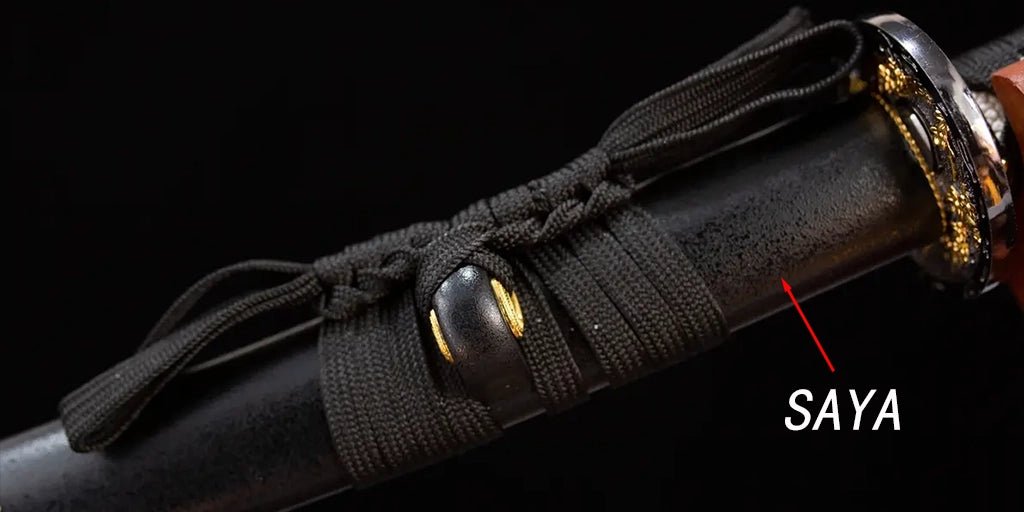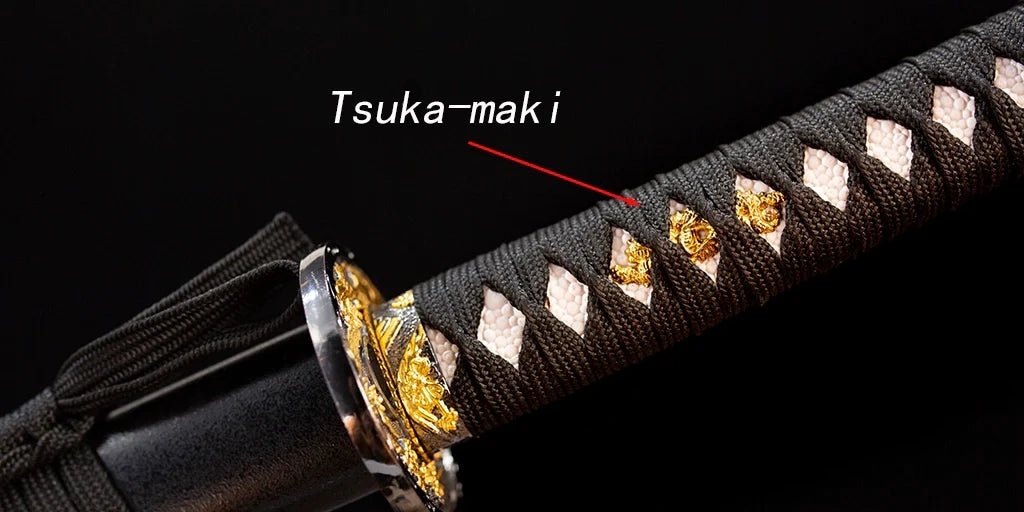Katana Habaki : Essential accessories
What is habaki?
Habaki is a Japanese sword tosogu a special ring, installed in the nakago top, sanding area at the base of the place, habaki is very inconspicuous, however, its role can not be ignored, for katana, it is the most indispensable small accessories.

The Habaki role of the katana
The blade is usually inserted into the saya, and to prevent the blade from being scratched by friction between the blade and the saya when inserting or pulling it out, katana sayas are made looser, with the blade sliding out only along the sharpened mune. However, this also creates a problem in that the blade does not fit tightly into the saya and can fall out if one is not careful. The habaki is placed at the base of the blade, between the nakago and the blade itself. The habaki fits into the koi-guchi so that the blade has very little contact with the inside of the scabbard. In the past, when Japanese swords were still weapons of war, because the blade needed to be sharpened so often, the sword was fine but the habaki was broken. Also, the more times the blade was sharpened, the thinner the blade would become, the fit of the habaki would weaken, and the habaki would need to be remade, so the habaki was actually a consumable item.

Habaki design
The original habaki were made of iron by the swordsmiths themselves, and these iron habaki were called tomo-habaki and were highly prized. After entering the Edo period, the Japanese sword became more decorative and gradually became a symbol of status. Since there were no wars and no need to draw swords to fight, the ornate habaki became popular, usually made of copper because it is softer and easier to mold to the shape of the blade without scratching the surface of the blade. The more advanced ones are made of silver, and are often wrapped in gold, silver, or red copper foil on the outside of the habiki, usually made by a silversmith.
Although the habiki is a very small accessory, craftsmen still use numerous variations of rubbing marks to make it more aesthetically pleasing and to roughen the surface, increasing its friction with the saya,a competent and aesthetically pleasing habaki on a custom katana also serves to bring out the beauty of the eye.

How to make a habaki?
1. The material of habaki is usually copper or copper alloy. After deciding the size of habaki, the approximate size of copper is cut from the copper plate.
2. Depending on the sword, the thickness of the copper sheet to be used is determined. The thickness of the habaki must be sufficient to fill the mune surface of the nakago and the upper end of the polished mune surface.
3. Since the thickness of the habaki at the edge of the tip of the sword is less than the thickness of the nakago end, the metal is forged to form a triangular cross-section.
4. The metal is forged (pounded) so that the thickness in the center of the habaki is significantly greater than the sides.

5. The center of the habaki is run over with a rod with a rounded end so that the surface where the habaki and mune come into contact is slightly concave.
6. At this point the habaki has a raised ridge, the sides are thinner and can be prepared for plastic wrapping on the sword nakago.
7. Bend the habaki into a U-shape and wrap the sword nakago on.
8.After the habaki is wrapped around the sword nakago, it is further shaped with a file. A small insert is inserted into the opening and welded closed. The edge area will be against the insert.

9. The picture shows the habaki mounted on the nakago. The upper shaded area is the thickened area in the center of the habaki, and the lower shaded area is the insert, which fills the gap between the habaki and the outer edge of the nakago. The insert and thickened center section rest against the notch in the top of the nakago, providing support for the habaki and allowing the habaki to hold the hilt in place.The sides of the habaki widen toward the hilt, allowing the habaki to function as a fitment, allowing the blade to be tightly secured to the carp mouth.




Leave a comment
This site is protected by hCaptcha and the hCaptcha Privacy Policy and Terms of Service apply.